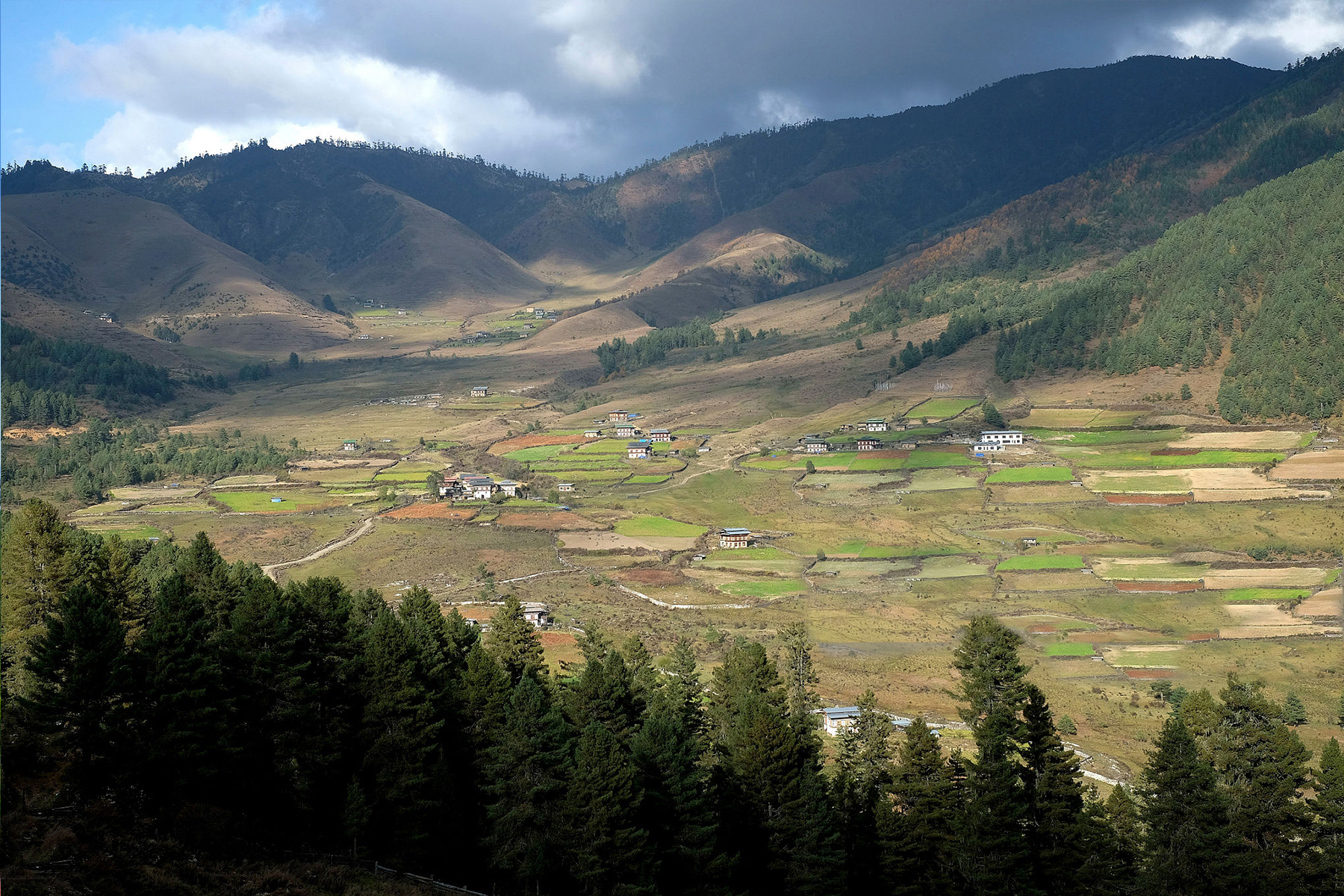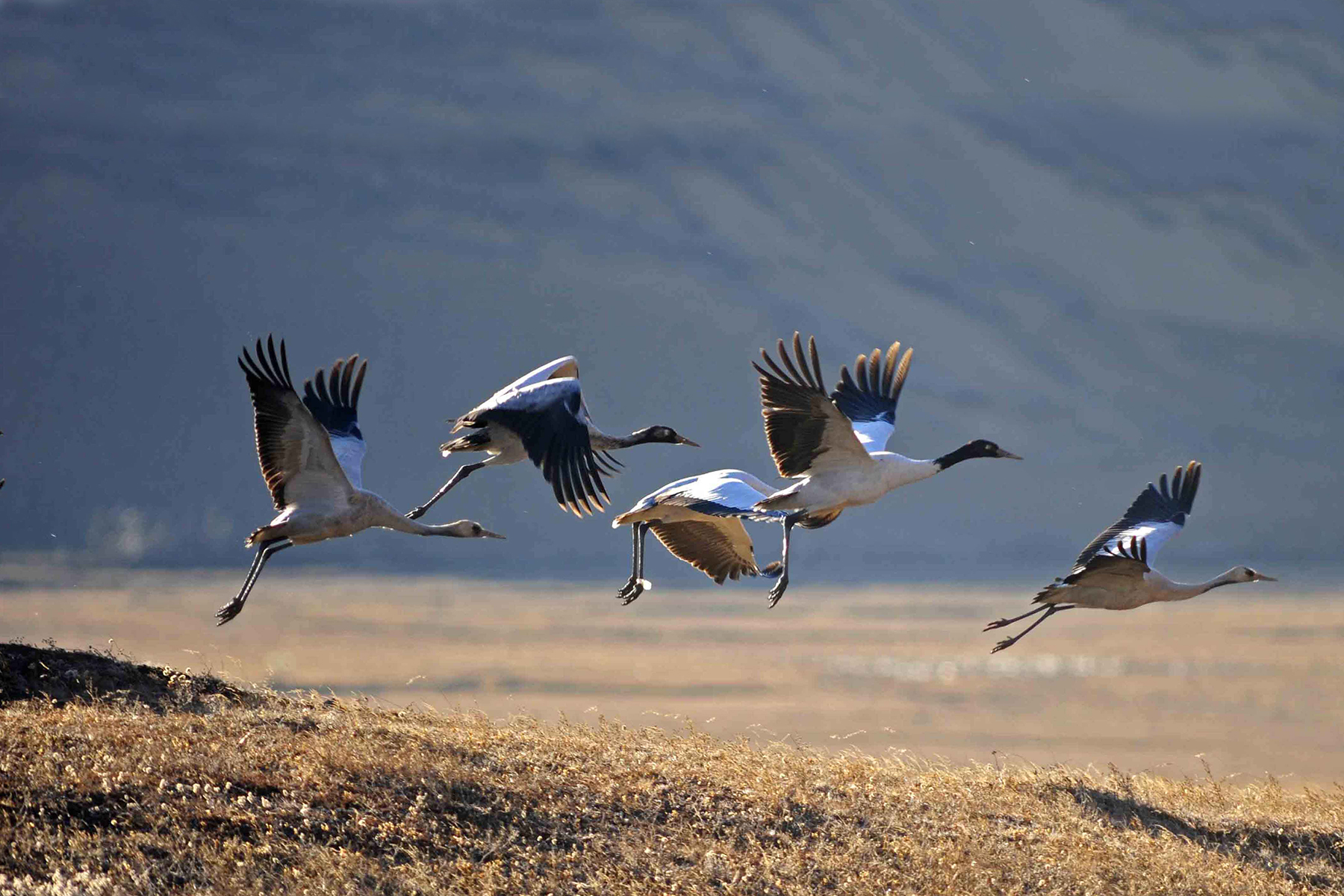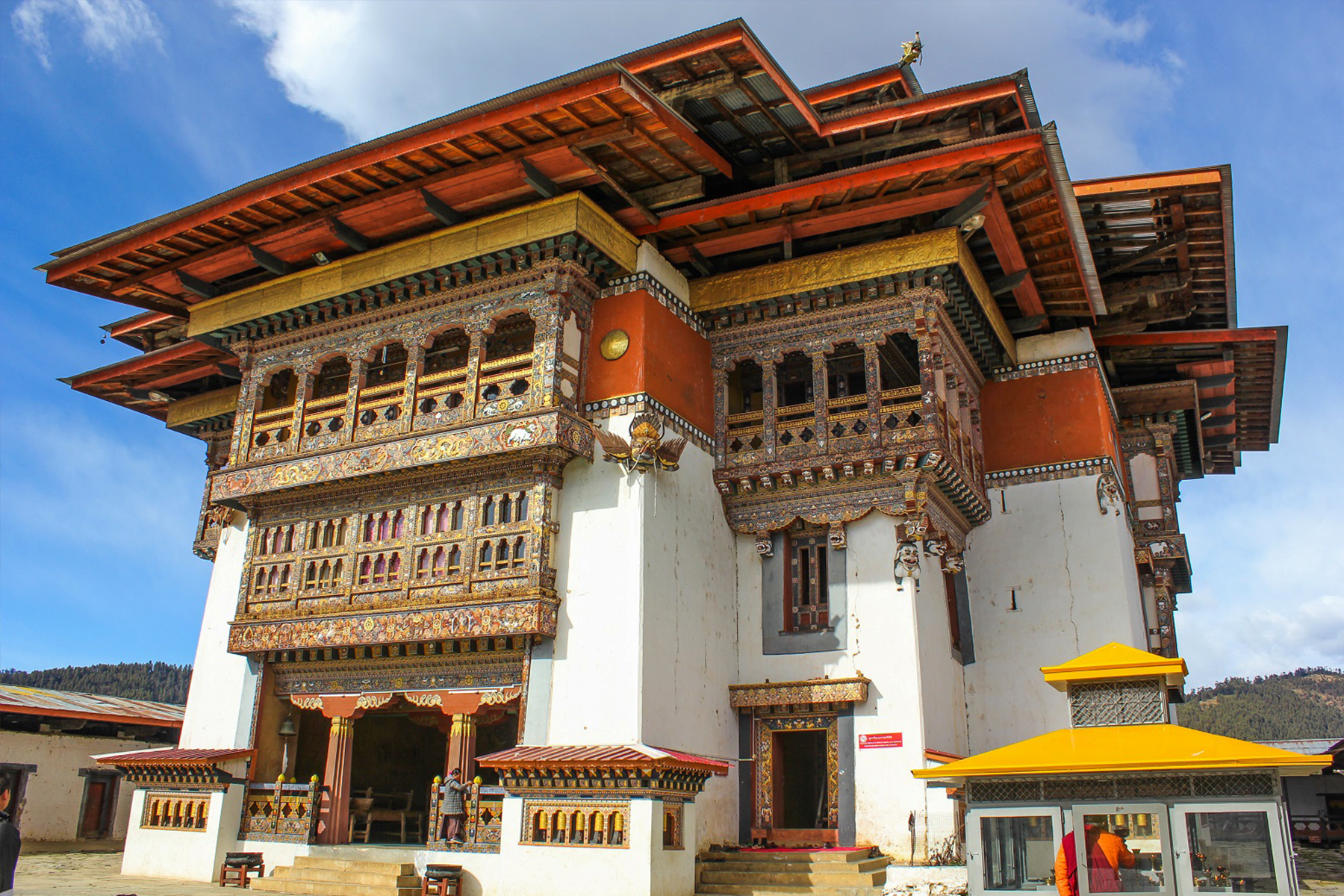Phobjikha Valley
Located in: Wangdue
History & Overview
Spread across central Bhutan's highlands, the expansive Phobjikha Valley (also known as Gangteng Valley) forms a dramatic U-shaped glacial basin famous for its ecological and spiritual significance. This protected wetland, spanning 163 square kilometers under the care of the Royal Society for the Protection of Nature (RSPN), serves as the winter haven for endangered black-necked cranes migrating from Tibet. These majestic birds perform a sacred aerial ritual - circling the valley's Gangteng Monastery three times upon arrival each October and again before their spring departure, a phenomenon deeply revered in local Buddhism. The valley's mosaic of marshes, forests, and farmlands supports 13 other globally threatened species alongside its iconic cranes. Dominated by the historic Gangteng Monastery of the Nyingma tradition, the landscape blends conservation with traditional agriculture, offering visitors breathtaking vistas where fluttering prayer flags frame views of cranes dancing across frozen wetlands at dawn. This extraordinary harmony of wildlife and spiritual heritage makes Phobjikha a living showcase of Bhutan's environmental ethos.
Black Necked Crane Centre
Located in: Wangdue
History & Overview
Your first stop in Phobjikha should be the Royal Society for Protection of Nature (RSPN) Information Centre, where you’ll gain fascinating insights into the valley’s star residents: the endangered black-necked cranes. The centre offers: Interactive displays on crane migration and wetland ecology High-powered spotting scopes to observe cranes in the wild (with a free Field Guide to Crane Behaviour to decode their movements) A 15-minute documentary about the cranes’ sacred bond with Bhutan (perfect for cloudy days!) The heartwarming highlight is Karma, an eight-year-old crane rescued as a chick with a broken wing. Now thriving in a protected enclosure, Karma offers visitors a rare close-up encounter with these elusive birds. Donations support RSPN’s mission to expand habitats for injured cranes like him.
Gangtey Monastery
Located in: Wangdue
History & Overview
Rising prominently above the expansive Phobjikha Valley in Wangdue Phodrang District, Gangteng Monastery (also called Gangtey Gonpa) stands as the principal seat of Bhutan's Pema Lingpa tradition within the Nyingma school of Buddhism. Founded in the 17th century and currently led by Head Lama Rigdzin Kunzang Pema Namgyal, this important religious center comes alive during two major annual festivals - the sacred Gangtey Tshechu with its elaborate masked dances, and the unique Crane Festival honoring the winter migration of endangered black-necked cranes. The monastery's elevated position provides breathtaking views across the glacial valley, where spiritual practice and environmental conservation intersect beautifully. As one of Bhutan's most significant Nyingma institutions, Gangteng safeguards the profound teachings of Terton Pema Lingpa while serving as a cultural cornerstone for local communities. Visitors often marvel at how the monastery's traditional architecture - with its golden roofs and whitewashed walls - complements the natural splendor of the protected wetlands stretching below.





